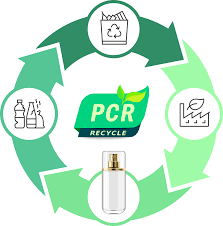global pp demand pp totalled 55.1 mln tons in 2013, with limited impact of the economic slowdown on the global market for pp, says ceresana. pp revenues are expected to rise by 5.8 pa until 2021.the opening up of new application areas, the development of biobased types of polypropylene and the substitution of other materials continue to offer high growth potential for the pp market. but the world market share of western european pp producers is anticipated to fall from 13.9 to 11.4 in upcoming years. this is largely due to the only moderate increase of demand in the largest national markets, namely germany, italy, and france. eastern europe will grow more strongly.especially in the russian packaging sector polypropylene is able to gain at the favour of competing plastics like pet and pe.usa, as the world&39s largest consumer of rigid plastic packaging is reporting a recent increase of demand for pp again. china and india continue to see a massive increase of demand, which is why asiapacific is expected to account for about 58 of total global demand in 2021.&ldquomore than half of global pp output is processed into packaging products. the largest sales market is flexible packaging made from pp films. rigid pp packaging, eg containers and caps, rank second. fibres made from pp as well as consumer goods reached a share of around 12 percent each. the highest growth rate in the upcoming years is expected for consumption in the automotive industry. but the construction sector and the e&e segment are also likely to see pp demand increase by about 4 pa each,&rdquo said ceresana in the report.the raw material situation will continue to relax, since production capacities for the pp feedstock propylene will be expanded notably in the future. especially china will increase the use of alternative technologies to produce propylene mainly pdh plants and cto technology. as a result, a number of new pp plants will be constructed. a detailed analysis of production capacities in each country and of each company paints a conclusive picture of future growth regions. the region asiapacific already accounts for almost half of the total global capacity and is likely to increase capacities by another 40 in the next eight years. other important plants will be constructed in the countries of eastern europe and the middle east. this overall development will lead to an only moderate increase of pp prices, which will result in a slight slowing down of growth in global sales.due to a reduction of production volume, western europe will turn from a net exporter to a net importer of pp. despite an increase of own production, asiapacific will reach a net import of about 2 mln tons of pp. china first and foremost needs its output to satisfy domestic demand. should all scheduled pp projects be realised, the middle east in particular will considerably increase net exports and satisfy the rising global demand. 






